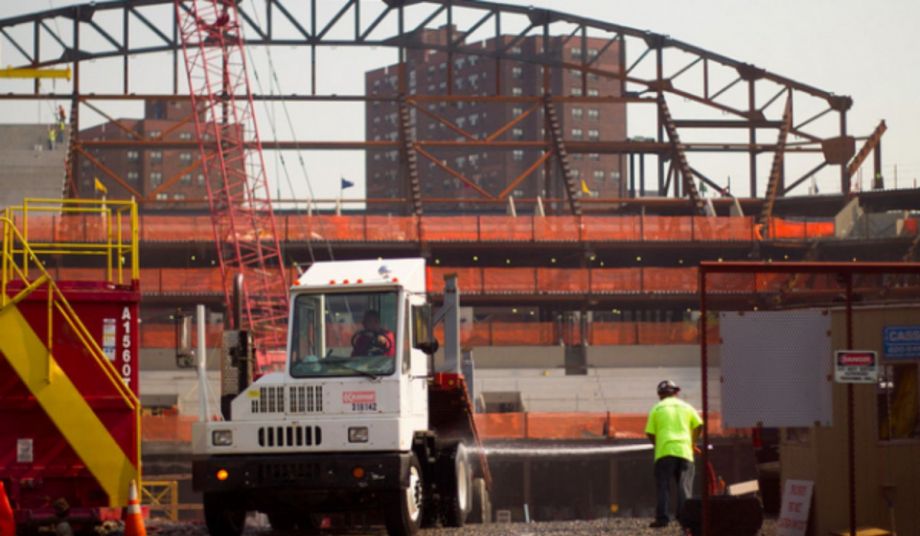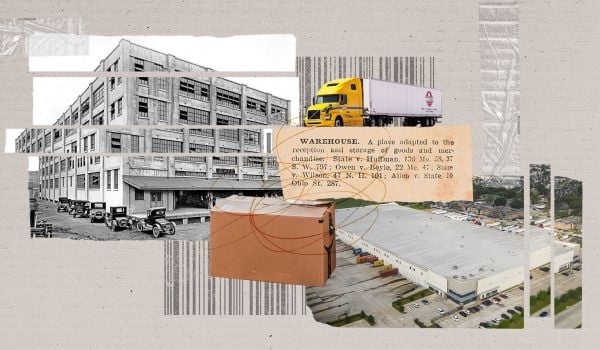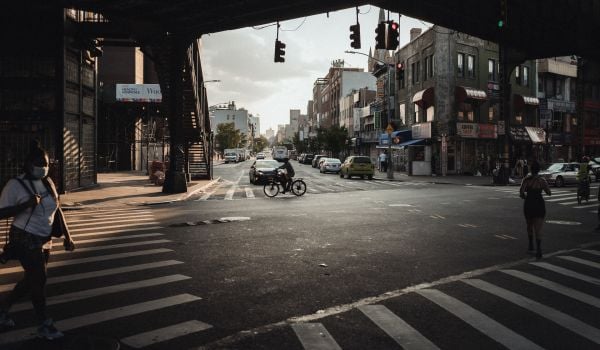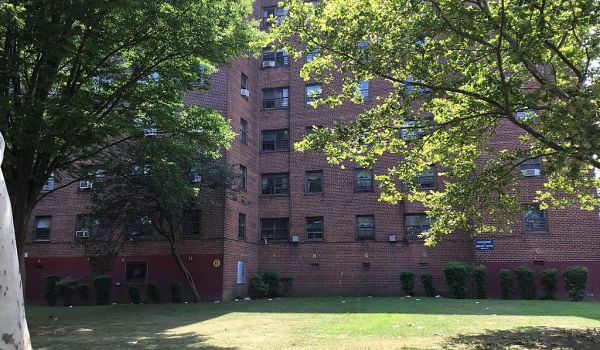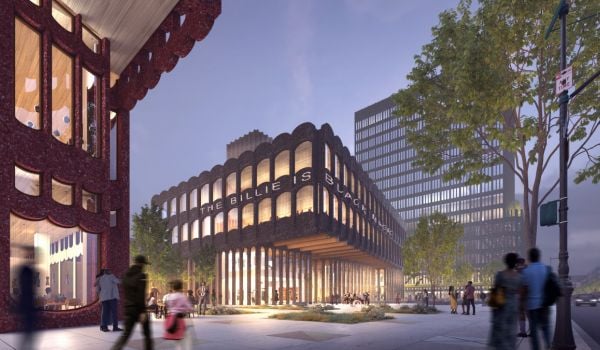The 22-acre Atlantic Yards project in Brooklyn has inspired more bad blood in Brooklyn than perhaps any other development short of the apartments built over Ebbets Field.
Spearheaded by the Empire State Development Corporation, alongside private developer Bruce Ratner and his company Forest City Ratner, the project has met vocal opposition from local groups such as Develop Don’t Destroy Brooklyn since Ratner bought the New Jersey Nets and announced a plan to move them to a new home in Brooklyn. The new arena, Barclays Center is set to open in the fall and will operate on land sold to Ratner by the Metropolitan Transit Authority for below-market value. Its adjacent parking lots will occupy land condemned as blight by the state and seized for the development through eminent domain proceedings.
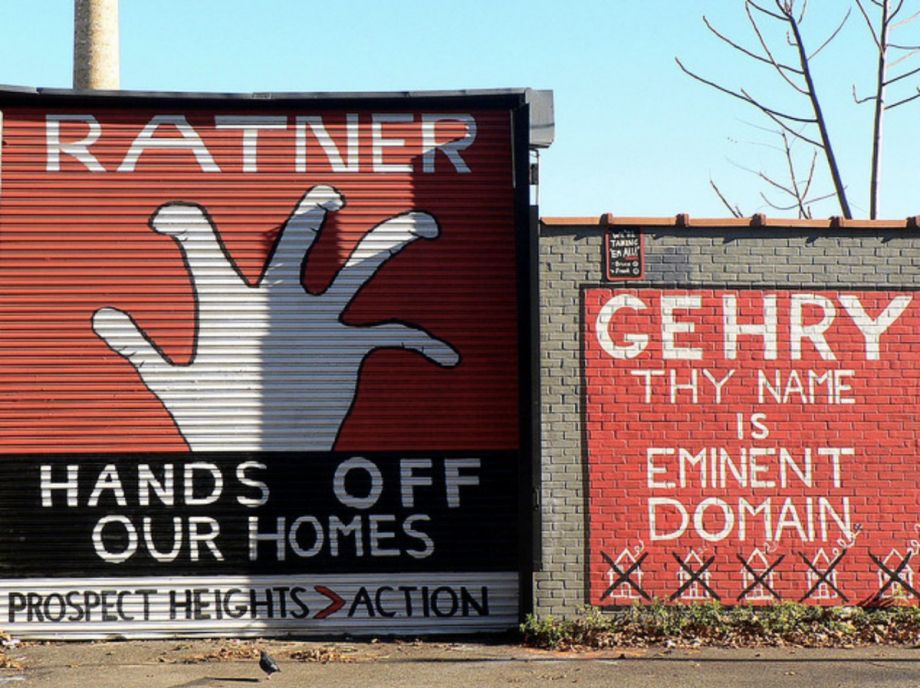
Community group Develop Don't Destroy Brooklyn has denounced Ratner's redevelopment plans. Credit: horseycraze on Flickr
Initially, the sprawling project was expected to include the arena as well as 16 mixed-use buildings designed by celebrity architect Frank Gehry. In exchange for millions of dollars in tax breaks and other subsidies, Ratner pledged that the buildings would contain tax-generating retail and office space as well as 6,400 apartments, at least 30 percent of which would be reserved for low- to middle-income families. Development was to take 10 years. But by 2008, the one-two punch of the recession and never-ending litigation against the project crushed those expectations.
In 2009, a new agreement with the state gave Forest City Ratner a new 25-year window. For most construction projects, environmental and neighborhood impact studies are conducted to give the community an overview of a project’s ramifications, not only after the project is completed but during the construction process. While such studies were filed under the original 10-year plan, no new studies were conducted to see what an extension of 15 years would do to the local area.
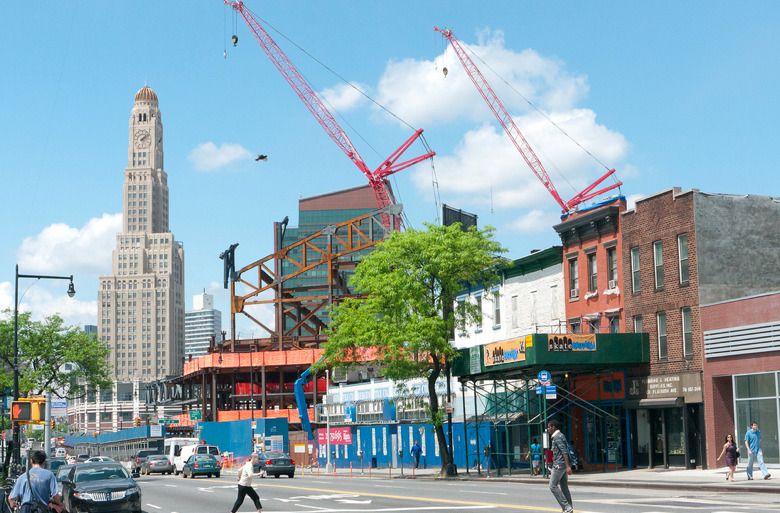
The new court ruling is being hailed as a victory by community activists Credit: Adrian Kinloch on Flickr
Recognizing this incongruity, Develop Don’t Destroy Brooklyn filed a court case against Empire State Development Corporation — New York state’s public redevelopment authority, commonly referred to as ESDC — arguing that the authority had failed to take into consideration the impact of additional of construction. A lower court originally had ruled with the community, stating that the developers would have to file a new Supplemental Environmental Impact Statement (SEIS), a study that would detail how an extra 15 years would play out in the area.
ESDC appealed, but on Tuesday the Court of Appeals put it to rest in a succinct, six-sentence ruling: Motions for leave to appeal denied. The developers will have to do the study.
Besides being a victory for the community, what does this ruling mean? Writing in his watchdog blog Atlantic Yards Report, Norman Oder writes:
At issue is whether a change in timing of a project whose fundamental elements seem unchanged is a fundamental change. And, depending on which side you consult, it’s either a dangerous intervention by the judiciary into agency discretion or the last check on an out-of-control agency that failed to tell the public that it faced 25 years of construction, extended surface parking lots, and lingering vacant lots.
Oder makes it clear that a project’s construction can drastically affect a community. One only has to look across the East River to Manhattan for evidence of this. There, the Second Avenue Subway is likely to greatly help the East Side when it is completed, but in the meantime, local businesses suffer through inaccessible entrances, constant noise and omnipresent construction dust.

